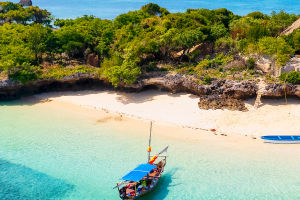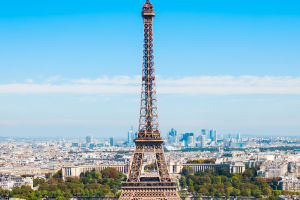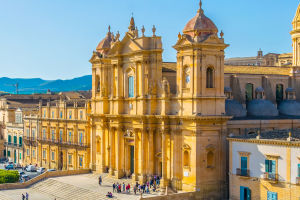Have you ever pictured yourself standing atop ancient stone terraces, gazing at mist rising from the Urubamba Valley below?
Visiting Machu Picchu is a dream come true for many, but getting there is part of the magic—and the challenge.
Whether you're trekking the classic Inca Trail, adjusting to high-altitude air, or simply soaking in the awe of this UNESCO World Heritage Site, here's a thoughtfully planned guide to help you enjoy every step of your journey.
Choosing Your Route: Inca Trail or Alternatives?
There are several routes that lead to Machu Picchu, each offering a different experience.
1. Classic 4-Day Inca Trail: For many, it's the dream route. You'll hike 43 km over four days, pass through cloud forests, ancient ruins, and finally arrive at the Sun Gate just as the sunrise illuminates Machu Picchu. It requires advance permits (limited to 500 people daily) and costs around USD $600–700, including guide, porter, and campsite fees.
2. Short Inca Trail (2 days): A good choice if you're short on time. You still follow part of the ancient path, camp the first night, then arrive at Machu Picchu early on day two. Costs about USD $400–450.
3. Salkantay Trek (5 days): A scenic, less crowded alternative—mountain passes, high-altitude lakes, glacier views. Usually USD $450–550 including guide and lodges.
4. Train-to-llaqta Route: For non-hikers or tight schedules, take PeruRail from Cusco or Ollantaytambo to Aguas Calientes, then bus to Machu Picchu. Train options range from budget (USD $60 one way) to luxury with gourmet meals.
Booking Entry and Permits
Machu Picchu entrance tickets start at PEN 152 (~USD $40) for foreign adults.
Additional tickets for Huayna Picchu summit (PEN 200/~USD $50) or Machu Picchu Mountain (PEN 200). Buy them online through the official Machu Picchu website or authorized agencies.
Inca Trail permits are required and they sell out quickly—especially April–September. Experts advise booking at least 4–6 months in advance through licensed local agencies.
Altitude Planning Tips
Cusco sits at 3,400 meters above sea level, and even Machu Picchu is at about 2,400 meters—altitude sickness is real. Leading medical experts, including those cited by the Journal of Travel Medicine, recommend:
• Stay in Cusco for at least 2–3 nights before trekking
• Drink water constantly and try coca tea (widely available and soothing)
• Take it slow on your trek and recognize symptoms like headache or nausea
Packing Essentials for the Trek
Here's what to bring:
1. Light but warm layers for cooler nights
2. Rain jacket and waterproof bag—weather changes quickly
3. Headlamp and batteries for early mornings
4. Water bottle with filter or purification tablets
5. Sun protection: hat, sunglasses, high SPF sunscreen
6. Hiking boots with grip for muddy steps
7. Trekking poles (optional but helpful on descents)
8. Trail snacks—nuts, energy snacks, dried fruit
Porters on the Inca Trail carry most of the load, but personal items like water, snacks, and rain gear go in your daypack.
Best Time to Go
The dry season (May–September) is the most popular and offers clear skies and minimal rainfall. However, June and July can be very crowded. For fewer people and impressive green scenery, late April and late September are excellent—just be ready for a chance of light rain.
Where to Stay: Before and After the Trek
In Cusco: Night before your trail, choose central areas close to Plaza de Armas.
• Tucked Inn Hostel – affordable and friendly atmosphere
• JW Marriott El Convento Cusco – luxury stay in a converted convent
In Aguas Calientes: You'll arrive here after the trek or train.
• Casa Andina Standard Machu Picchu – comfortable, close to bus line
• Inkaterra Machu Picchu Pueblo Hotel – peaceful option if you want to extend your stay
It's recommended to reserve hotels well in advance, especially during peak seasons.
Inside Machu Picchu: Parking and Timing
Most hikers arrive at Machu Picchu between 6:00 and 7:00 AM, allowing time to walk from the Sun Gate into the main complex. The site is open 6:00 AM to 5:30 PM.
If you're arriving by bus from Aguas Calientes, first buses start around 5:30 AM, and return trips continue until about 5:00 PM. Bring PEN 12 (~USD $3.50) for each bus ride.
Photography and Route Strategy
Sunrise photos from the area near the Guardhouse (Inti Punku) are unforgettable. Bring a tripod and aim to reach there around 6:00 AM when the line is manageable.
Inside the citadel, best angles for the classic stone terraces against Huayna Picchu are mid-morning when the mist lifts. Walk through the Temple of the Sun and the Central Plaza for varied perspectives.
For hikers who got Huayna Picchu permits, a mountain shot looking back over the terraces is the postcard image of Machu Picchu. If not, the Machu Picchu Mountain summit is another risk-free high-view option.
Local Food and Cultural Notes
Peruvian food is outstanding—don't miss these local gems:
• Quinoa soup and alpaca stew—great for recovery
• Cuy is featured in some traditional menus, though optional
• Chicha morada and fresh fruit juices—refreshing and widely available
Also, be respectful of local culture: speak softly, avoid loud selfies, and don't climb on the ruins.
Planning Your Return and Reflection
A day or two after Machu Picchu, consider exploring the Sacred Valley (Ollantaytambo, Pisac) before heading back to Cusco or Lima. They offer rich cultural experiences with fewer tourists and great photo opportunities.


